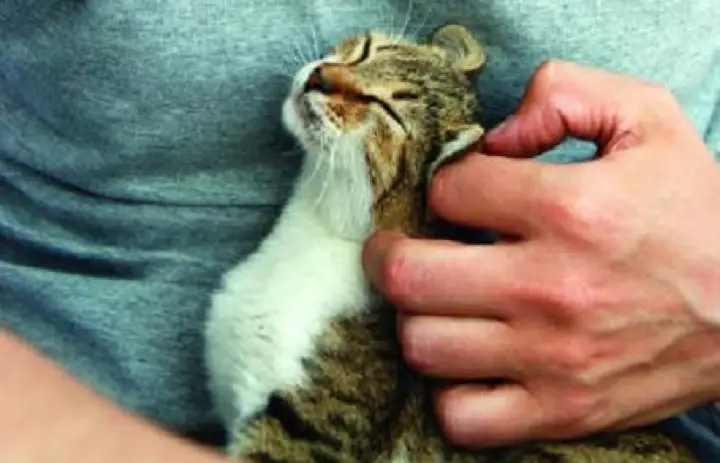The cat’s purr is one of the most common vocalizations a cat can make. Do you know why they purr? Or how a cat purrs? Do you know some cats can purr while others cannot? Check out these seven interesting facts about cat purrs…
- Scientists don’t completely agree about how a cat purrs. Most think it starts in the brain where a signal is sent to the laryngeal muscles causing them to vibrate at 25 to 150 vibrations purr second! This causes the vocal cords to separate when the cat both inhales and exhales and results in the purr that we hear.
- Because of the low pitch of the purr, we tend to feel the purr as much or sometimes more than we hear it.
- Other animals besides cats can purr – including hyenas, mongooses, guinea pigs, raccoons, genets and civets.
- Some big cats cannot purr, but instead roar. Those that roar, do not purr (lions and tigers). Those that purr, do not roar (bobcats and mountain lions).
- Cats purr when they are happy – but, they also purr when they frightened or threatened. It’s kind of like a nervous habit when the cat is agitated (similar to when people smile when they are nervous).
- Purrs have healing powers. It’s believed that purring is a self-soothing and healing mechanism for a cat. In humans, the 25 Hz frequency is used in healing wounds. See the infographic about purring for all of the health benefits!
- Cats will usually stop purring when they hear water running. Many vets will turn on a faucet to get their cat patient to stop purring so that they can hear the cat’s lungs and heartbeat.
What have you noticed about your cat’s purr? Do you feel more relaxed when you cat is purring?
